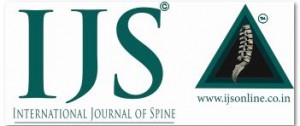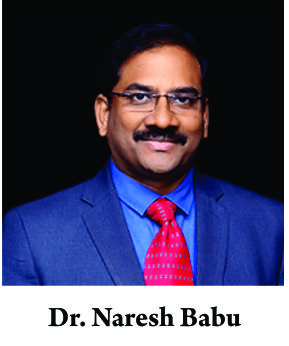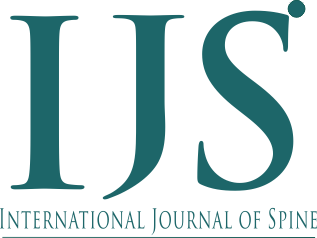Unusual Association of KBG Syndrome with Scheuermann’s Disease
Volume 7 | Issue 1 | January-June 2022 | Page: 01-06 | Sanjay N. Murthy, Jaganaathan Srinivasan, Cheryl Honeyman, Rajendra Sakhrekar, Amit Bishnoi, Sriram H. Srinivasan
DOI: 10.13107/ijs.2020.v07i01.036
Authors: Sanjay N. Murthy [1], Jaganaathan Srinivasan [2], Cheryl Honeyman [3], Rajendra Sakhrekar [4], Amit Bishnoi [5], Sriram H. Srinivasan [6]
[1] Department of Orthopaedics, Royal Stoke University Hospital, UK.
[2] Department of Orthopaedics, James Cook University Hospital, Middlesbrough, BW.
[3] Department of Orthopaedic Nursing, James Cook University Hospital, Middlesbrough, BW.
[4] Department of Spinal Surgery, Schoen klinik Neustadt Holestine, Germany.
[5] Department of Spinal Surgery, Leicester University Hospital, UK.
[6] Department of Spinal Surgery, Ipswich University Hospital NHS Trust, UK.
Address of Correspondence
Dr. Sanjay N. Murthy,
Core Trainee, Department of Orthopaedics, Royal Stoke University Hospital, UK.
E-mail: sanjayn293@gmail.com
Abstract
In this paper we discuss a novel case in which a patient had a comorbid diagnosis of KBG syndrome and Scheuermann’s disease. The patient was a 14-year-old boy, referred to orthopaedics for assessment of his spinal deformity. Initial assessment revealed that he had a rib prominence on his right side, which was corrected upon bending forward. SLR examination indicated significantly tight hamstrings. Plantars were upturning, but other reflexes were normal. He had kyphosis measuring up to 59.4 degrees. MRI of the spine depicted features of classic Scheuermann’s disease, from D6-D10. The patient was given conservative treatment consisting of physical therapy and postural training. He remained asymptomatic during the course of a 5-year follow-up period. This case is unique due to the comorbidity of Scheuermann’s disease and KBG syndrome, which has never been reported in the literature. This case report suggests that routine spinal screening in cases of KBG syndrome would contribute to a better understanding of treatment and diagnosis.
Keywords: KBG syndrome, Scheuermann’s disease
References
1.Herrmann J, Pallister PD, Tiddy W, Opitz JM. The KBG syndrome-a syndrome of short stature, characteristic facies, mental retardation, macrodontia and skeletal anomalies. Birth Defects Orig Artic Ser.1975;11:7–18.
2. Li QY, Yang L, Wu J, Lu W, Zhang MY, Luo FH. A case of KBG syndrome caused by mutation of ANKRD11 gene and literature review Clin J Evid Based Pediatr. 2018;13:452–458.
3. Sirmaci A, Spiliopoulos M, Brancati F, Powell E, Duman D, Abrams A, Bademci G, Agolini E, Guo S, Konuk B, Kavaz A, Blanton S, Digilio MC, Dallapiccola B, Young J, Zuchner S, Tekin M. Mutations in ANKRD11 cause KBG syndrome, characterized by intellectual disability, skeletal malformations, and macrodontia
4. Goldenberg, A., Riccardi, F., Tessier, A., Pfundt, R., Busa, T., Cacciagli, P., … Philip, N. (2016). Clinical and molecular findings in 39 patients with KBG syndrome caused by deletion or mutation of ANKRD11. American Journal of Medical Genetics Part A, 170(11), 2847–2859. https://doi. org/10.1002/ajmg.a.37878
5. Damborg F, Engell V, Andersen M, et al. Prevalence, concordance, and heritability of Scheuermann kyphosis based on a study of twins. J Bone Joint Surg Am 2006;88:2133–6.
6. Makurthou AA, Oei L, El Saddy S, et al. Scheuermann disease: Evaluation of radiological criteria and population prevalence. Spine (Phila Pa 1976) 2013;38:1690–4
7. McKenzie L, Sillence D. Familial Scheuermann disease: a genetic and linkage study. J Med Genet 1992;29:41–5.
8. Brancati, F., Sarkozy, A. & Dallapiccola, B. KBG syndrome. Orphanet J Rare Dis 1, 50 (2006). https://doi.org/10.1186/1750-1172-1-50
9. Fotiadis E, Kenanidis E, Samoladas E, Christodoulou A, Akri- topoulos P, Akritopoulou K. Scheuermann’s disease: Focus on weight and height role. Eur Spine J. 2008; 17: 673-678.
10. Lowe TG. Scheuermann’s disease. Orthop Clin North Am 618 1999; 30: 475-487, ix
11. Lowe TG. Scheuermann’s disease. In: Textbook of Spine 655 Surgery, Bridwell KH, DeWald RL Eds. Philadelphia: 656 Lippincott-Raven 1997:1173-1198
12. Horn, Samantha R.; Poorman, Gregory W.; Tishelman, Jared C.; Bortz, Cole A.; Segreto, Frank A.; Moon, John Y.; Zhou, Peter L.; Vaynrub, Max; Vasquez-Montes, Dennis; Beaubrun, Bryan M.; Diebo, Bassel G. (2019-01-01). “Trends in Treatment of Scheuermann Kyphosis: A Study of 1,070 Cases From 2003 to 2012”. Spine Deformity 7 (1): 100–106. doi:10.1016/j.jspd.2018.06.004. ISSN 2212-134X. PMC 7102192. PMID 30587300
13. Huq, Sakibul; Ehresman, Jeffrey; Cottrill, Ethan; Ahmed, A. Karim; Pennington, Zach; Westbroek, Erick M.; Sciubba, Daniel M. (2019-11-01). “Treatment approaches for Scheuermann kyphosis: a systematic review of historic and current management”. Journal of Neurosurgery: Spine. -1 (aop): 235–247. doi:10.3171/2019.8.SPINE19500. PMID 31675699.
14. Riouallon, Guillaume; Morin, Christian; Charles, Yann-Philippe; Roussouly, Pierre; Kreichati, Gaby; Obeid, Ibrahim; Wolff, Stéphane; French Scoliosis Study Group (2018-09-01). “Posterior-only versus combined anterior/posterior fusion in Scheuermann disease: a large retrospective study”. European Spine Journal. 27 (9): 2322–2330. doi:10.1007/s00586-018-5633-x. ISSN 1432-0932. PMID 29779056. S2CID 29169417
15. Hawes, Martha (2006). “Impact of spine surgery on signs and symptoms of spinal deformity”. Developmental Neurorehabilitation. 9 (4): 318–39. doi:10.1080/13638490500402264. PMID 17111548. S2CID 20680230
16. Hawes, Martha C.; O’Brien, Joseph P. (2008). “A century of spine surgery: What can patients expect?”. Disability & Rehabilitation. 30 (10): 808–17. doi:10.1080/09638280801889972. PMID 18432439. S2CID 19443315.
17. Mansfield JT, Bennett M. Scheuermann Disease. [Updated 2020 Aug 15]. In: StatPearls [Internet]. Treasure Island (FL): StatPearls Publishing; 2020 Jan-. Available from: https://www.ncbi.nlm.nih.gov/books/NBK499966/
| How to Cite this Article: Murthy SN, Srinivasan J, Honeyman C, Sakhrekar R, Swamy G, Srinivasan SH Unusual Association of | KBG Syndrome with Scheuermann’s Disease | International Journal of Spine | January-June 2020; 7(1): 29-32. |










